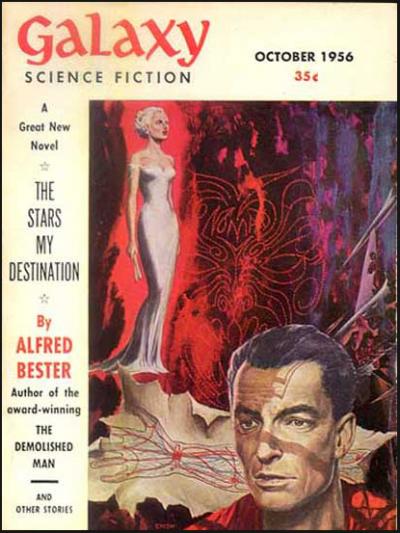Mother Repurposed
Mother Repurposed
At 63 years old, my child-rearing days are long over. And I haven’t missed them. My husband and I started very young, had four rambunctious rascals a couple of years apart, and then threw ourselves into the ring with earnest and blind ambition to raise perfect specimens. Thank God, they were less than perfect, just like us.
When the last one went to college, leaving us empty nesters, we didn’t shed a tear. Well, I didn’t. My husband cried with joy. I did have a moment in the kitchen the morning after my last little cowboy left the ranch, staring into the backyard, sipping coffee and contemplating what I should cook for dinner. It hit me hard that it didn’t matter anymore what we ate for dinner. We had only ourselves to please from that point forward. My husband and I were free to eat Spam on toast at 9 p.m. with a Guinness if we felt like it.
Admittedly, we had stumbled and bumbled our way through Parenting 101, with mixed results. I say mixed because we weren’t super parents. We started out strong with drug-free, natural childbirth, breast-fed all for at least a year, and kept a bushel of new-age parenting primers on hand for how-to tips to tackle temper tantrums, finicky eaters, potty training, puberty, and rebelliousness without turning them into sociopaths. But, little by little, we began to waver and adopted our own philosophy of coping with four different personalities ranging from Mother Teresa to, dare I say, Donald J. Trump.
It was a hit-or-miss strategy. We weren’t strong on discipline, relying more on reverse child psychology and behavior manipulation. We implemented the team approach. Stick together and don’t cave. Problem was, I was a sucker for tears, and my husband traveled a lot. You see where I’m going — when you can’t beat them, join them. I spent a lot of time on the floor with them reliving my childhood.
We got through it. With the help of “Sesame Street,” Slurpees, Super Mario, McDonald’s French fries, Eggo waffles, pagers, and anything else we could bribe them with, we managed to function on a high level with pretty good results.
Fourteen years ago, our first grandchild was born, and we were beside ourselves with utter wonder and heart-crushing love, as if we had never laid eyes on a baby before. Often when I held her I had no words, and my heart pumped with joy. We had been given another chance to do it all over again, to get it right, but without the mess of conflicting emotions. Oh, you don’t want to eat, obey, do your homework, brush your teeth, or get dressed? No problem. We’re okay with that because Mommy and Daddy will be picking you up soon and can deal with you. Here, have another bowl of ice cream. We just love smelling and holding you.
Recently, our son and his wife asked us to watch our long-distance, 16-month-old granddaughter for a few days while they went away for the first time since her birth. She last saw us around her first birthday. I immediately agreed, but as the time approached I wondered if my husband and I were up to the task of very early mornings and nonstop activity. We had done the same for our two eldest granddaughters over the years, but this was different — we were older now, and this one didn’t really know us.
How would she react to strange, wrinkled people she might have some recall of but likely not, dressing, bathing, playing, and feeding her? Upsetting her entire universe that was entirely made up of her mommy and daddy? I wondered if I still had it in me — the knack to win over a small child and gain her trust to take your hand in hers and lead you to a toy, to wrap her arms around your neck in a bear hug, to reach up to be held, to see a pucker of rosebud lips and return a kiss?
I couldn’t bear to see her cry or miss her parents miserably. I wasn’t cut from that kind of cloth. Yet I had to accept it might happen. Would we fail? Collapse from exhaustion? Would she ever adjust to us and not scream in fright every time we lifted her from her crib? Where had my confidence gone, I worried.
When my son and daughter-in-law returned three days later, I admit we were a bit bug-eyed and sore. They bounded in the door from the airport murmuring her name, blowing kisses; arms wide open for her running embrace as if they’d been in solitary confinement, locked away from her for months. She looked up from her Duplo blocks and waved at them casually from a full squat I hadn’t been able to do in 50 years. And went right back to knocking down the pink-and-purple architectural wonder we had built together, belting out a high-octave shriek and breaking into a giggle of supreme pleasure, clapping her pudgy hands in glee.
“How did you do it, Mom, with four of us?” my son asked later after our granddaughter had kicked and screamed her way through a rough patch of being drawn out of the bathtub when she wanted to linger longer. Wrestling a toddler through a tantrum takes a certain resolve and strength. But he managed it so firmly, lovingly, and patiently that I was taken aback. I couldn’t have handled it better myself.
“I don’t know.” I shook my head and wondered. Chaos reigned often in our spirited family, I remembered. He wasn’t the first of my children who asked the question, but, in all fairness, this time, running out of time, I gave it more thought.
“Raising children is a lot like marriage,” I confided. “One day you wake up and decide how you’re going to make it work. The answer is you have to be 100 percent committed. You can’t be absent or fake it, and you can’t seek perfection from your child or yourself. You have to put the time in, though. You have to pay attention. The rest mostly takes care of itself.”
On the return trip home a few days later, our baby granddaughter’s sweet baby scent of Dreft detergent and milky breath lingered on my clothing, and I closed my eyes with a nagging ache in my heart. I missed her already and longed to live closer to her. At the same time I felt renewed, younger than I had in a very long time.
My husband reached over and hooked my arm under his as the airplane lifted off the tarmac, grateful one leg of the high-altitude journey was out of the way.
“What’s on your mind?” he whispered with our heads touching, staring at the closed tray tables of the seats in front of us.
I couldn’t put into words what I was really thinking, so I smiled seductively. “Let’s make a baby,” I whispered back.
He understood, and we laughed behind cupped hands. Once back in the trenches, we had taken up where we had left off like old master yogis. But now on our way home, I pined for my orthotic slippers and the leisurely draining of a morning pot of coffee.
There is a lot to be said about aging and staying vibrant. Hanging with a child doesn’t hurt. I am growing old, but I think I still got it.
Carol Dray, a previous Star contributor, lives in Bridgehampton.




